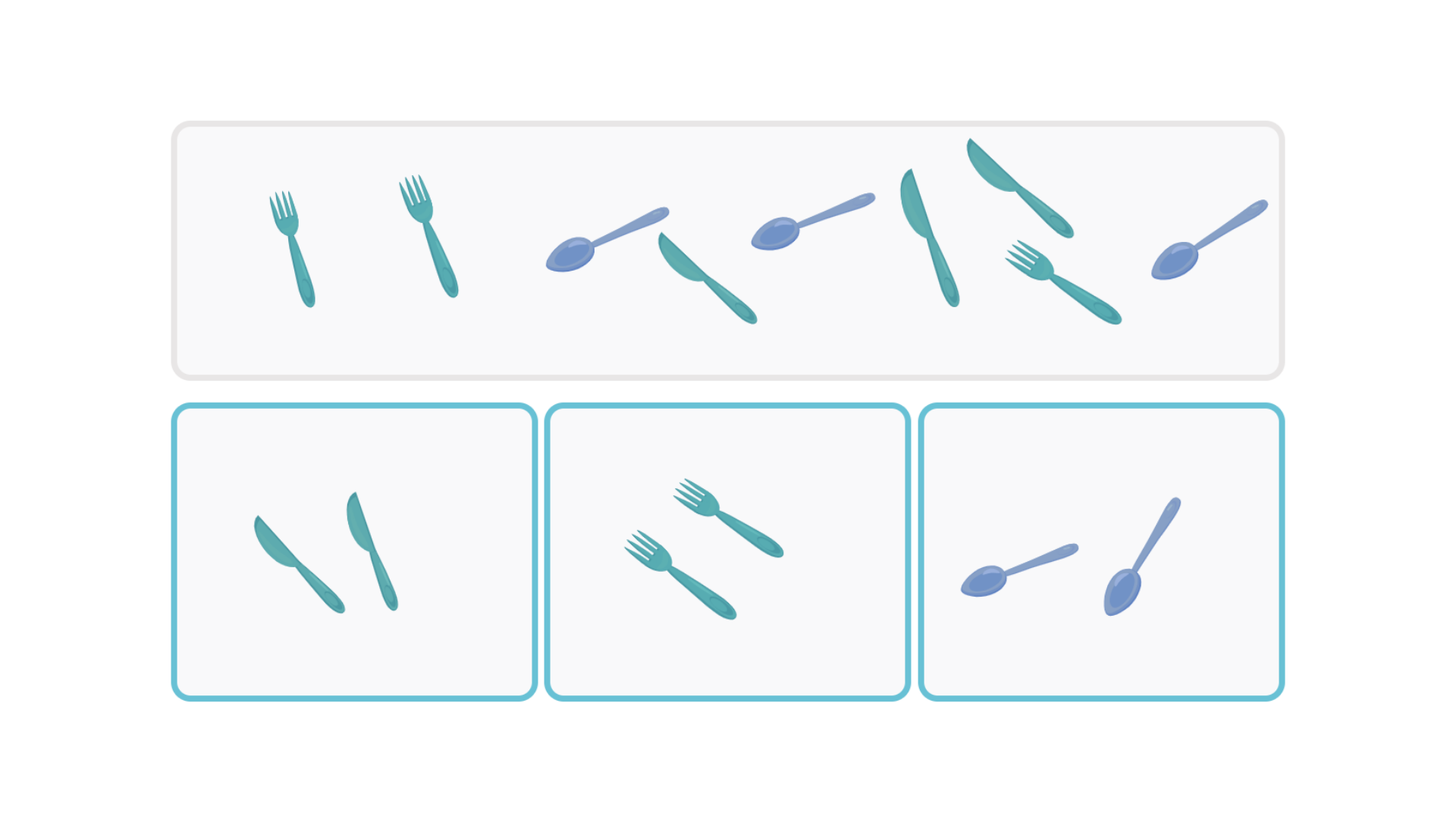Tips on how to use this exercise at home and at school.
Early maths concepts
This exercise is the reverse of the previous exercises 101, 102 and 103. Now the child already knows the selected objects, but they have to find out according to which criteria they should classify them. This is a simpler version of this exercise in which we assign objects and the criterion is the appearance of the object. So we are looking for objects that look the same.

Why is this exercise important?
The exercise focuses on sorting according to the given criteria. It is important that the criteria are clearly defined and that the objects can also be explicitly classified. The child learns to think, analyse and structure their thoughts. By sorting, the child also learns conceptual precision, which is important in mathematics.
Who is this exercise suitable for?
Mainly for preschoolers, but it is also suitable for older children who need to develop their language skills.
Methodological recommendations
Either read aloud the instructions to the child, play them or let the child read them by themselves.
The child looks at the objects and explains how to proceed and why. We ask why they think this way and if another object in the picture could also belong to the group and why. In this way the child thinks, learns to argue and develops language skills through their verbal reasoning. In this way, they learn in a much deeper and more complex way.
Tips for similar activities outside the app
When shopping, notice the arrangement of products. Why are they arranged in that way? Ask your child questions like "Why are all these juices put together?" (two rows of the same orange juice), or "Why are these chocolates in the same row?" (they all have nuts on the wrapper) or "Why are these dishes together?" (white deep plates).